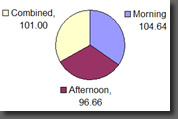Sunchoke
History & Statistics
Tubers of Helianthus tuberosus introduced into Europe from Canada by Samuel de Champlain in the seventeenth century and originally called Canadian artichoke; the origin of the name Jerusalem is from the Italian girasole (sunflower). A 170-g portion is a good source of copper; a source of vitamin B1; provides 1.7 g of dietary fibre; supplies 30 kcal (125 kJ). Much of the carbohydrate is the non-starch polysaccharide inulin.
*
Sunflower (Helianthus tuberosus) native to North America and grown for its edible tubers. The aboveground part of the plant is a coarse, usually multibranched, frost-tender perennial, 7 – 10 ft (2 – 3 m) tall. The numerous showy flower heads have yellow ray flowers and yellow, brownish, or purplish disk flowers. The underground tubers vary in shape, size, and colour. Jerusalem artichoke is popular as a cooked vegetable in Europe and has long been cultivated in France as livestock feed. In the U.S. it is rarely cultivated.
*
From the Columbia Encyclopedia:
Jerusalem artichoke, tuberous-rooted perennial (Helianthus tuberosus) of the family Asteraceae (aster family), native to North America, where it was early cultivated by the indigenous inhabitants. In this particular case the name Jerusalem is a corruption of girasole [turning toward the sun], the Italian name for sunflower, of which this plant is one species. The edible tubers are somewhat potatolike, but the carbohydrate present is inulin rather than starch, and the flavor resembles that of artichokes. Jerusalem artichoke is more favored as a food plant in Europe (where it was introduced in 1616) and China than in North America, where it is most frequently grown as stock feed. The inulin is valuable also as a source of fructose for diabetics. Jerusalem artichokes are classified in the division Magnoliophyta, class Magnoliopsida, order Asterales, family Asteraceae.
*
Sunchoke Nutritional Value Guide: (Raw)
Quantity - 1 Cup
Energy - 115 Calories
Carbohydrates - 26 (grams)
Protein - 3 (grams)
Cholesterol - 0 (milligrams)
Weight - 150 (grams)
Fat - 0 (grams)
Saturated Fat 0 (grams)
*
Description
It is a herbaceous perennial plant growing to 1.5–3 m tall.
The leaves are opposite on the lower part of the stem, alternate higher up; the larger leaves on the lower stem are broad ovoid-acute and can be up to 30 cm long, the higher leaves smaller and narrower; they have a rough, hairy texture.
The flowers are yellow, produced in flowerheads 5–10 cm diameter, with 10–20 ray florets, and are thought to smell like milk chocolate.
The tubers are gnarly and uneven, typically 7.5–10 cm long and 3–5 cm thick, and vaguely resembling ginger root, with a crisp texture when raw; they vary in color from pale brown to white, red or purple.[2][3]
Etymology
Jerusalem artichokes
The tubers, which resemble ginger root, have a consistency much like potatoes, and in their raw form have a similar taste to potatoes except they are crunchier and sweeter with a slightly nutty taste. The carbohydrates give the tubers a tendency to become soft and mushy if boiled, so it is best to steam them lightly to preserve their texture. The inulin is not well digested by some people, leading in some cases to flatulence and gastric pain. Gerard's Herbal, printed in 1621, quotes the English planter John Goodyer on Jerusalem artichokes:
"which way soever they be dressed and eaten, they stir and cause a filthy loathsome stinking wind within the body, thereby causing the belly to be pained and tormented, and are a meat more fit for swine than men." [4]
*
Scientific classification
Kingdom: Plantae
(unranked): Angiosperms
(unranked): Eudicots
(unranked): Asterids
Order: Asterales
Family: Asteraceae
Tribe: Heliantheae
Genus: Helianthus
Species: H. tuberosus
Binomial name Helianthus tuberosus
*
This is not a medical site. Please consult your physician before using anything mentioned on these pages.

This is not a medical site. Please consult your physician before using or applying anything mentioned on these pages. We urge you to use this diet plan with your doctors supervision.
Download Blood Sugar Spreadsheet!

Download Here (33kb)
You can keep track of your daily, weekly or monthly blood sugar test results with this handy spreadsheet. As you enter in your test numbers a graph will automatically tell you what your morning and afternoon readings are. Also, you will get a chart that will tell you your blood sugar averages. This is great becuase it's the long-term sugar results that are important.
Be sure to print your spreadsheet and take it to your next doctor appointment. Give them a copy to put into your records!
Note: You will need Excel or another program to open this spreadsheet.

